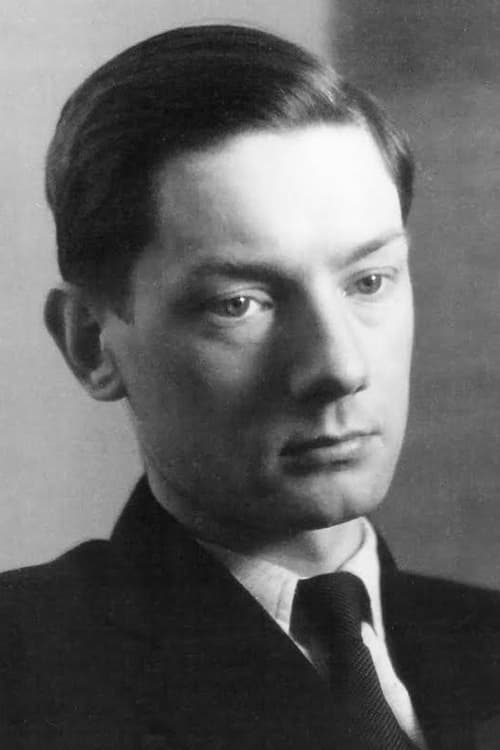
Himself
Maya Deren (1917-1961) es quizás la primera directora mujer de cine americana. Lejos de ser una película biográfica, este documental, que cuenta con material original inédito, quiere reflexionar sobre el arte de la direccción cinematográfica a través de los pensamientos y las imágenes que Maya nos dejó.
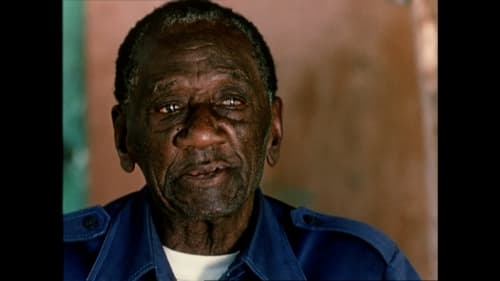
Himself
Cinta documental sobre la vida y la obra de la cineasta de vanguardia Maya Deren, quien desde el feminismo lideró el movimiento del cine independiente en los años cuarenta.

The collected shorts of Maya Deren the "Mother of the trance film" who worked completely outside the commercial film industry and made her own inner experience the center of her films.The collected shorts of Maya Deren the "Mother of the trance film" who worked completely outside the commercial film industry and made her own inner experience the center of her films.

Director
The collected shorts of Maya Deren the "Mother of the trance film" who worked completely outside the commercial film industry and made her own inner experience the center of her films.The collected shorts of Maya Deren the "Mother of the trance film" who worked completely outside the commercial film industry and made her own inner experience the center of her films.

Cinematography
The collected shorts of Maya Deren the "Mother of the trance film" who worked completely outside the commercial film industry and made her own inner experience the center of her films.The collected shorts of Maya Deren the "Mother of the trance film" who worked completely outside the commercial film industry and made her own inner experience the center of her films.

Himself
We accompany the 90-year-old filmmaker Alexander Hammid on a stroll through New York, wandering with him through the outer and inner landscapes of his world. The observation of details takes on a meditative character.

Himself (as Sasha Hammid)
Maya Deren is a legend of avant-garde cinema. This authoritative biography of the charismatic filmmaker, poet and anthropologist features excerpts from her pioneering Meshes of the Afternoon and her unfinished documentary on Haiti, interviews with Stan Brakhage and Jonas Mekas, and recordings of her lectures. Narrated by actress Helen Mirren, this definitive documentary offers startling insights into one of the most intriguing, accomplished figures in cinema history.

Director
Youth in Canada learning to come to terms with the world in which they have to live. A picture of the journey to adulthood - a composite of many children's journeys. The production utilized 340 teenagers, 65 adults, and 50 children, none of whom had any previous acting experience.

Director
Promotional film extolling the wonders to be seen at the New York World's Fair.

Editor
"To Be Alive!" was designed to celebrate the common ground between different cultures by tracing how children in various parts of the world mature into adulthood.

Cinematography
"To Be Alive!" was designed to celebrate the common ground between different cultures by tracing how children in various parts of the world mature into adulthood.

Writer
"To Be Alive!" was designed to celebrate the common ground between different cultures by tracing how children in various parts of the world mature into adulthood.

Director
"To Be Alive!" was designed to celebrate the common ground between different cultures by tracing how children in various parts of the world mature into adulthood.

Director of Photography
Night Journey, the dance, had its premiere only two and a half years after Appalachian Spring, and it is a close cousin. It too has a stream-of-consciousness narration: Jocasta, as she is about to kill herself, remembering what has happened to her. It too contains soul-delving solos, broken up by ensemble dances. Here, however, the ensemble is a darker element. As the story was taken from Greek tragedy, so the corps is the equivalent of Greek tragedy’s chorus. They tell us how to feel: afraid mostly. In this piece Graham pushed her habitual economy to its limits.

Director
Night Journey, the dance, had its premiere only two and a half years after Appalachian Spring, and it is a close cousin. It too has a stream-of-consciousness narration: Jocasta, as she is about to kill herself, remembering what has happened to her. It too contains soul-delving solos, broken up by ensemble dances. Here, however, the ensemble is a darker element. As the story was taken from Greek tragedy, so the corps is the equivalent of Greek tragedy’s chorus. They tell us how to feel: afraid mostly. In this piece Graham pushed her habitual economy to its limits.

Editor
A BAFTA award nominated documentary studying Hungarian refugee problems after the October 1956 revolution. Shot on the Austro-Hungarian frontier and in the refugee camp at Traiskirchen.

Director
Dramatization of the experience of a young married couple whose quarrels undermine their happiness and prevent the development of adult love based on mutual understanding.
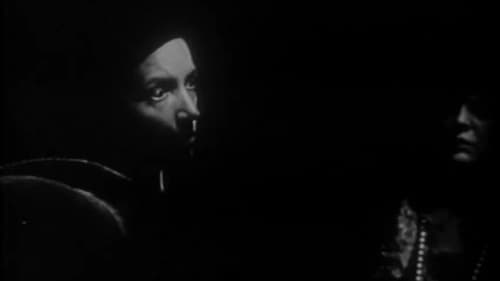
Editor
Madame Flora is terrified when she perceives a supernatural presence during one of her fraudulent séances...

Director
A documentary featuring musicians including Artur Rubinstein, Jan Peerce-Nadine Conner, and Jascha Heifetz.

Director
Short story film about a derelict and forgotten character hiding in a room somewhere in South America.

Director
Post-World War II film for young couples advising them of means to strengthen their marriages. Shows how two young couples have built lasting marriages by a clear analysis of their mutual aims and cooperation in achieving them. One couple, university graduates, have many interests in common. The other couple, a business man and a teacher, center their mutual affection in their son. Designed to be used with a marriage text.

Director
Analysis of personality cited as an important step in choosing the right partner for marriage. Emphasis is placed on choosing marriage partners with care and on accepting the other for what he or she is.

Director
Husband and wife struggle to attain a balance of power in their marriage in this neorealist social guidance film.

Director
Alexander Hammid's sensitive narrative of how a pre-adolescent boy is helped by a psychiatrist to come to terms with his feelings.

Editor
1948 ARC Identifier 46998 / Local Identifier 306.131. FEATURES THE PERSONALITY, PHILOSOPHY, TECHNIQUES AND ARTISTRY OF EDWARD WESTON, AS SHOWN THROUGH SCENES OF THE ARTIST AT HOME, ON LOCATION AND AT WORK WITH HIS STUDENTS. U.S. Information Agency. (1982 - 10/01/1999) Made possible by a donation from Simon Phipps

Director of Photography
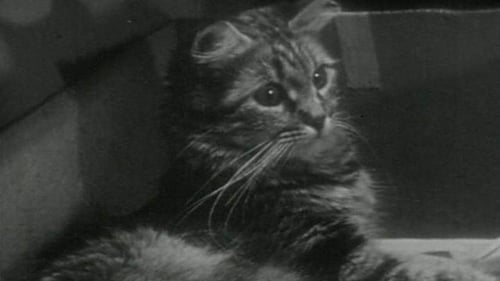
Production Design
Un gato macho corteja a una gata y forman una familia juntos. Vemos que los gatitos nacen y son nutridos por la madre, mientras que el padre les brinda su apoyo. Este film circuló en dos versiones: una muda, y otra más larga narrada por Maya Deren, por aquel entonces esposa de Alexander Hammid.

Editor
Un gato macho corteja a una gata y forman una familia juntos. Vemos que los gatitos nacen y son nutridos por la madre, mientras que el padre les brinda su apoyo. Este film circuló en dos versiones: una muda, y otra más larga narrada por Maya Deren, por aquel entonces esposa de Alexander Hammid.

Director of Photography
Un gato macho corteja a una gata y forman una familia juntos. Vemos que los gatitos nacen y son nutridos por la madre, mientras que el padre les brinda su apoyo. Este film circuló en dos versiones: una muda, y otra más larga narrada por Maya Deren, por aquel entonces esposa de Alexander Hammid.

Screenplay
Un gato macho corteja a una gata y forman una familia juntos. Vemos que los gatitos nacen y son nutridos por la madre, mientras que el padre les brinda su apoyo. Este film circuló en dos versiones: una muda, y otra más larga narrada por Maya Deren, por aquel entonces esposa de Alexander Hammid.

Producer
Un gato macho corteja a una gata y forman una familia juntos. Vemos que los gatitos nacen y son nutridos por la madre, mientras que el padre les brinda su apoyo. Este film circuló en dos versiones: una muda, y otra más larga narrada por Maya Deren, por aquel entonces esposa de Alexander Hammid.

Director
Un gato macho corteja a una gata y forman una familia juntos. Vemos que los gatitos nacen y son nutridos por la madre, mientras que el padre les brinda su apoyo. Este film circuló en dos versiones: una muda, y otra más larga narrada por Maya Deren, por aquel entonces esposa de Alexander Hammid.

Director
A Better Tomorrow (1945) is a documentary short that focuses on New York City progressive public schools.

Director
A 1945 Oscar nominated short documentary about the Library of Congress. It is one of 26 documentary shorts produced between 1942 and 1945 by the U.S. Overseas Film Bureau, and intended to show foreign viewers something about America and it's values, this one focuses on the important institution in Washington D.C. which preserves written and other works that have been copyrighted, as part of the country's heritage.

Director
U.S. Goverment film about the creation of the Tennessee Valley Authority in the 1930s and 1940s.

Director
Hymn of the Nations, originally titled Arturo Toscanini: Hymn of the Nations, is a 1944 film directed by Alexander Hammid, which features the "Inno delle nazioni," a patriotic work for tenor soloist, chorus, and orchestra, composed by Italian opera composer Giuseppe Verdi in the early 1860s. (For this musical work, Verdi utilized the national anthems of several European nations.) In December 1943, Arturo Toscanini filmed a performance of this music for inclusion in an Office of War Information documentary about the role of Italian-Americans in aiding the Allies during World War II. Toscanini added a bridge passage to include arrangements of "The Star-Spangled Banner" for the United States and "The Internationale" for the Soviet Union and the Italian partisans. Joining Toscanini in the filmed performance in NBC Studio 8-H, were tenor Jan Peerce, the Westminster Choir, and the NBC Symphony Orchestra. The film also included the overture to Verdi's opera La Forza del Destino.
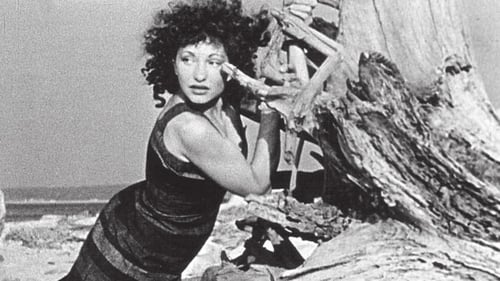
Cinematography
Narración onírica en la que una mujer, interpretada por Deren, se baña en una playa y se va en un viaje extraño en el que se encontrará con otras personas y otras versiones de sí misma. Deren dijo una vez que "la película es acerca de la lucha por mantener la identidad personal". El compositor John Cage y el poeta y crítico de cine Parker Tyler estuvieron involucrados en el rodaje y aparecen en el corto, que fue rodado en Amagansett, Long Island.

Narración onírica en la que una mujer, interpretada por Deren, se baña en una playa y se va en un viaje extraño en el que se encontrará con otras personas y otras versiones de sí misma. Deren dijo una vez que "la película es acerca de la lucha por mantener la identidad personal". El compositor John Cage y el poeta y crítico de cine Parker Tyler estuvieron involucrados en el rodaje y aparecen en el corto, que fue rodado en Amagansett, Long Island.
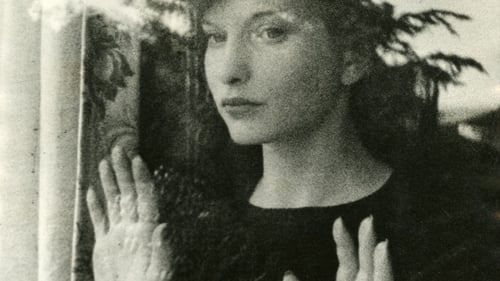
Director
Una mujer (interpretada por la propia Maya Deren) explora sus propias imágenes interiores, a través de un sueño, donde los objetos ordinarios de su vida diaria consiguen un misterio sobrecogedor. Deren (1917-1961) explicó que quería "plasmar en la película la sensación que experimenta un ser humano sobre un incidente, más que grabar el incidente con precisión". Codirigido con su marido, el director de fotografía Alexander Hammid, "Meshes of the Afternoon", a través de sus múltiples lecturas y reinterpretaciones, pronto se erigió como uno de los films experimentales más importantes de todos los tiempos, y convirtió a Maya Deren en la voz preeminente del "avant-garde cinema" de los Estados Unidos en los años 40 y 50, influyendo en directores como Jean Cocteau, Luis Buñuel o David Lynch. El film lo adquirió el MoMA -The Museum of Modern Art- de Nueva York.

Director of Photography
Una mujer (interpretada por la propia Maya Deren) explora sus propias imágenes interiores, a través de un sueño, donde los objetos ordinarios de su vida diaria consiguen un misterio sobrecogedor. Deren (1917-1961) explicó que quería "plasmar en la película la sensación que experimenta un ser humano sobre un incidente, más que grabar el incidente con precisión". Codirigido con su marido, el director de fotografía Alexander Hammid, "Meshes of the Afternoon", a través de sus múltiples lecturas y reinterpretaciones, pronto se erigió como uno de los films experimentales más importantes de todos los tiempos, y convirtió a Maya Deren en la voz preeminente del "avant-garde cinema" de los Estados Unidos en los años 40 y 50, influyendo en directores como Jean Cocteau, Luis Buñuel o David Lynch. El film lo adquirió el MoMA -The Museum of Modern Art- de Nueva York.

The Man
Una mujer (interpretada por la propia Maya Deren) explora sus propias imágenes interiores, a través de un sueño, donde los objetos ordinarios de su vida diaria consiguen un misterio sobrecogedor. Deren (1917-1961) explicó que quería "plasmar en la película la sensación que experimenta un ser humano sobre un incidente, más que grabar el incidente con precisión". Codirigido con su marido, el director de fotografía Alexander Hammid, "Meshes of the Afternoon", a través de sus múltiples lecturas y reinterpretaciones, pronto se erigió como uno de los films experimentales más importantes de todos los tiempos, y convirtió a Maya Deren en la voz preeminente del "avant-garde cinema" de los Estados Unidos en los años 40 y 50, influyendo en directores como Jean Cocteau, Luis Buñuel o David Lynch. El film lo adquirió el MoMA -The Museum of Modern Art- de Nueva York.

Director
Documentary examining the conflicts between the coming of modernization and the traditional culture of a small Mexican village.

Director of Photography

Director

Editor
A documentary about the conquest of Czechoslovakia by the Nazis just prior to World War 2.

Director of Photography
A documentary about the conquest of Czechoslovakia by the Nazis just prior to World War 2.

Screenplay
A documentary about the conquest of Czechoslovakia by the Nazis just prior to World War 2.

Director
A documentary about the conquest of Czechoslovakia by the Nazis just prior to World War 2.

Director
Probably the best-known advertising film for Bata, where joke and irony meet commercial purposes. Tires are sent from rural countryside to the turmoil of the city to serve progress.

Editor
On the coast of Yugoslavia lives fisherman Ivo Kralj, his wife Marie, son Vuk, and Ivo's mother in one happy home. Marie, who loves her husband and always looks forward to his return from sea, attracts Nikola, with whom Ivo, out of jealousy, has a scuffle at a dance. After the outbreak of World War I Ivo is mobilized. He ends up in a P.O.W. camp where he is subjected to hard labour. His family then receives news of his death. The years pass and the lonely widow Marie is occasionally visited by her friend Nikola. Ivo's mother would like her to remarry. Soon after the wedding Marie becomes pregnant. Ivo, who has been thought dead, succeeds in escaping the P.O.W. camp where he has spent several years. Upon his arrival home he finds his name on a memorial erected to the victims of the war...

Director of Photography

Director of Photography
A man and a woman meet on the streetcar. Six years ago, they were close . . .

Editor
A 13-minute documentary film depicting life in Prague.

Editor
A documentary of peasant life in an isolated village in the Carpathian Mountains of Slovakia, starting in early spring and ending after the harvest.

Unit Production Manager

Art Designer

Editor
Mimi lives with her parents and the maid Fanka in a villa near the forest. One day, a gamekeeper comes to court Mimi when her parents are away.
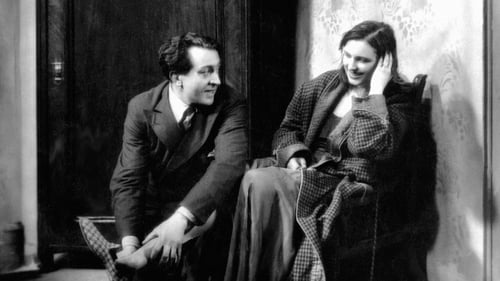
Production Design
Two secretaries go out on a double date, but the inexperienced Mary flees when offered money for sexual favors. She takes refuge in a cafe and encounters a plebeian Prince Charming. The film recounts the simple progress of their romance after they go home together.

Screenplay
In 1932 Hammid bought a handheld camera Bell-Howell and made his second film, Na Pražském hradě [Prague Castle], in close collaboration with the composer of the sound track, striving for an organic intertwining of image and music.

Director of Photography
In 1932 Hammid bought a handheld camera Bell-Howell and made his second film, Na Pražském hradě [Prague Castle], in close collaboration with the composer of the sound track, striving for an organic intertwining of image and music.

Director
In 1932 Hammid bought a handheld camera Bell-Howell and made his second film, Na Pražském hradě [Prague Castle], in close collaboration with the composer of the sound track, striving for an organic intertwining of image and music.

Director of Photography
This first true Czech avant-garde film turns away from a purely celebratory approach to the city. The camera follows a detached protagonist on his wanderings, as his highly subjective journey becomes a fragmented visualization of urban landscapes.

Director
This first true Czech avant-garde film turns away from a purely celebratory approach to the city. The camera follows a detached protagonist on his wanderings, as his highly subjective journey becomes a fragmented visualization of urban landscapes.

Production Design
An unknown gang has again broken into a van containing money from the European bank. Banker Sam Hamilton decides to use an armoured car for the next money transport. He hires racing driver Charly Allan as the driver. Allan is invited to Hamilton's house for a party. During a dance with the banker's daughter Bessy he is attacked by bandits, pushed to the ground and Bessy is kidnapped.

Production Design
Andrea, a beautiful daughter of a railway gateman, is seduced by a rich passenger, who missed his train. Left pregnant, Andrea marries another man and moves to Prague, only to encounter her former lover and recover her former lust.

Editor
Karel Plicka was also cinematographer of this short movie. Editor in charge was Alexander Hackenschmied. There is an extraordinary emotional charge, every shot is working on its own, such as photographs, paintings and poetic complement intertitles in this short. From the perspective of nature and the perspective is shifting to the people and their habits, work and clothes. Peculiar documentary shots underscore Ruthenians (men, women and children) who are interested in looking into the camera and the curious "eye" showing off their habits.
